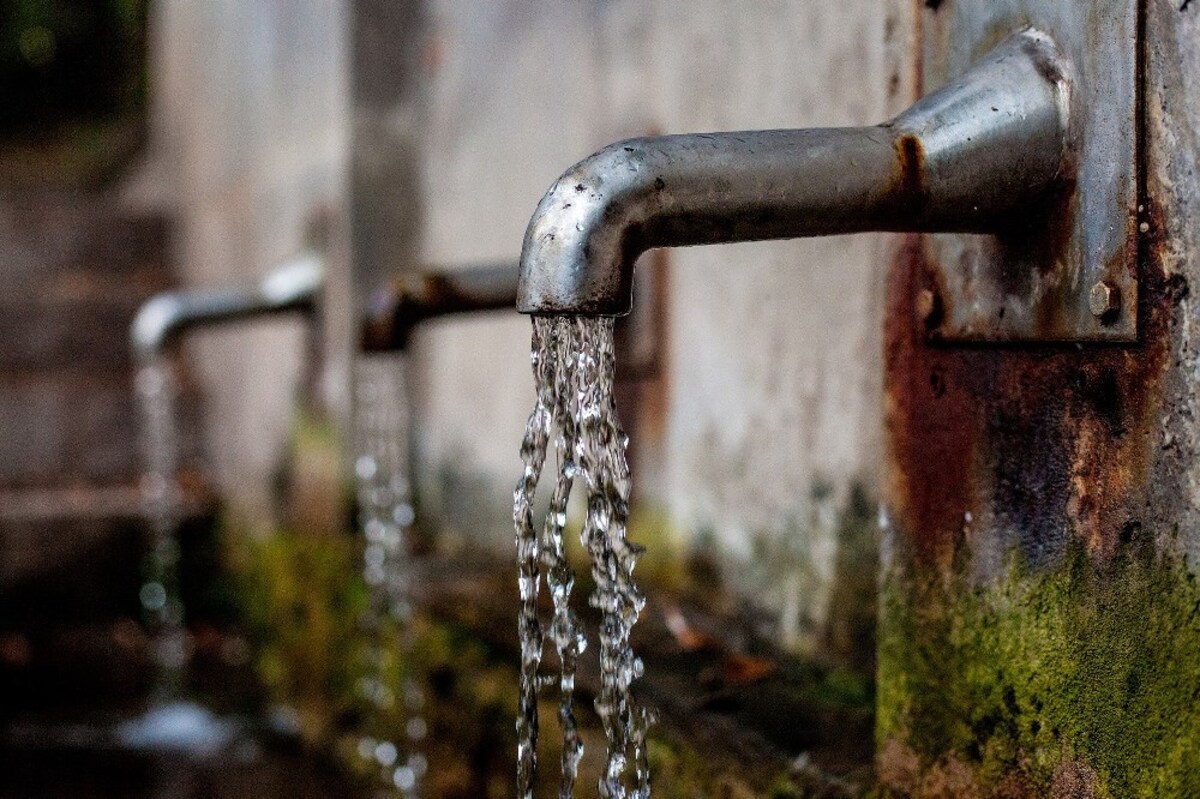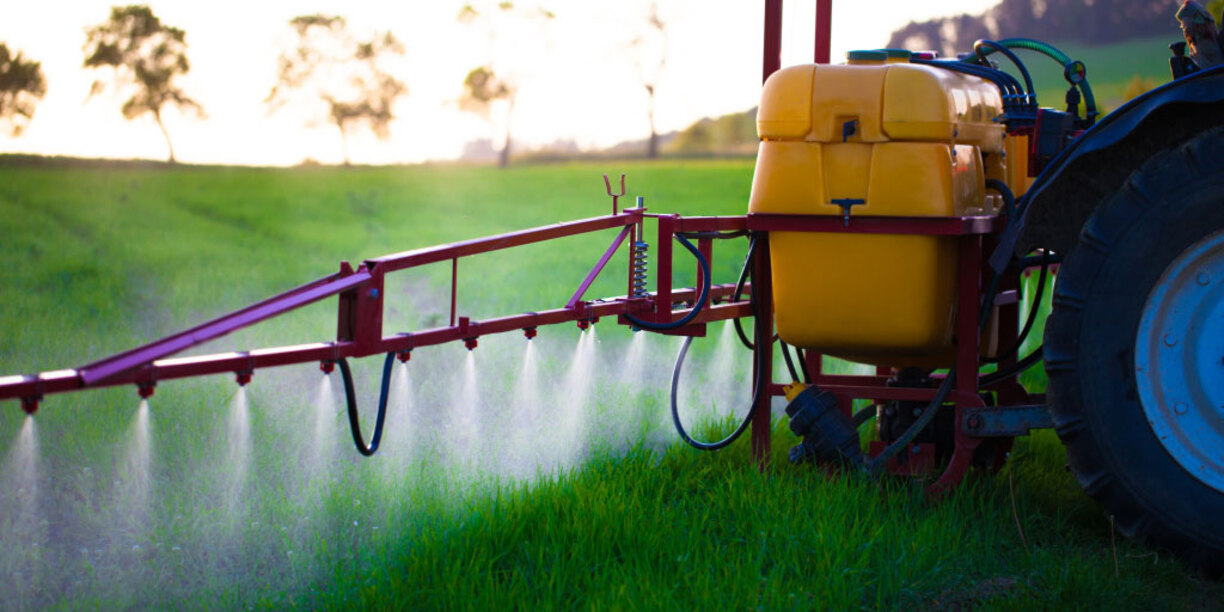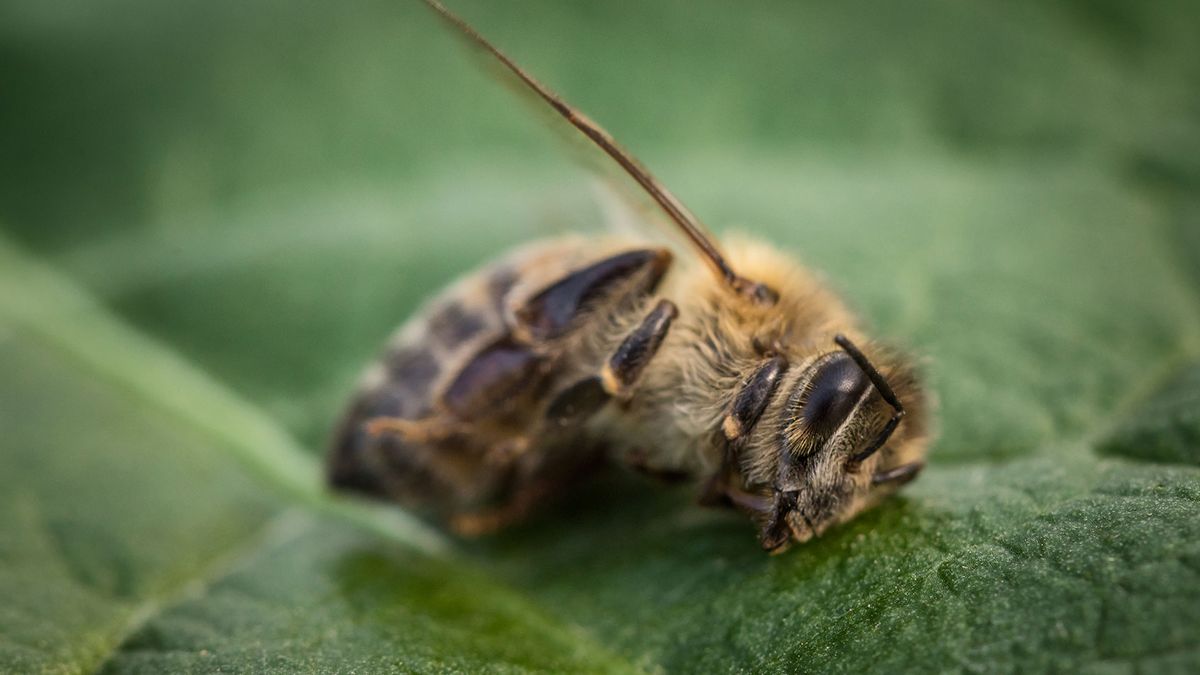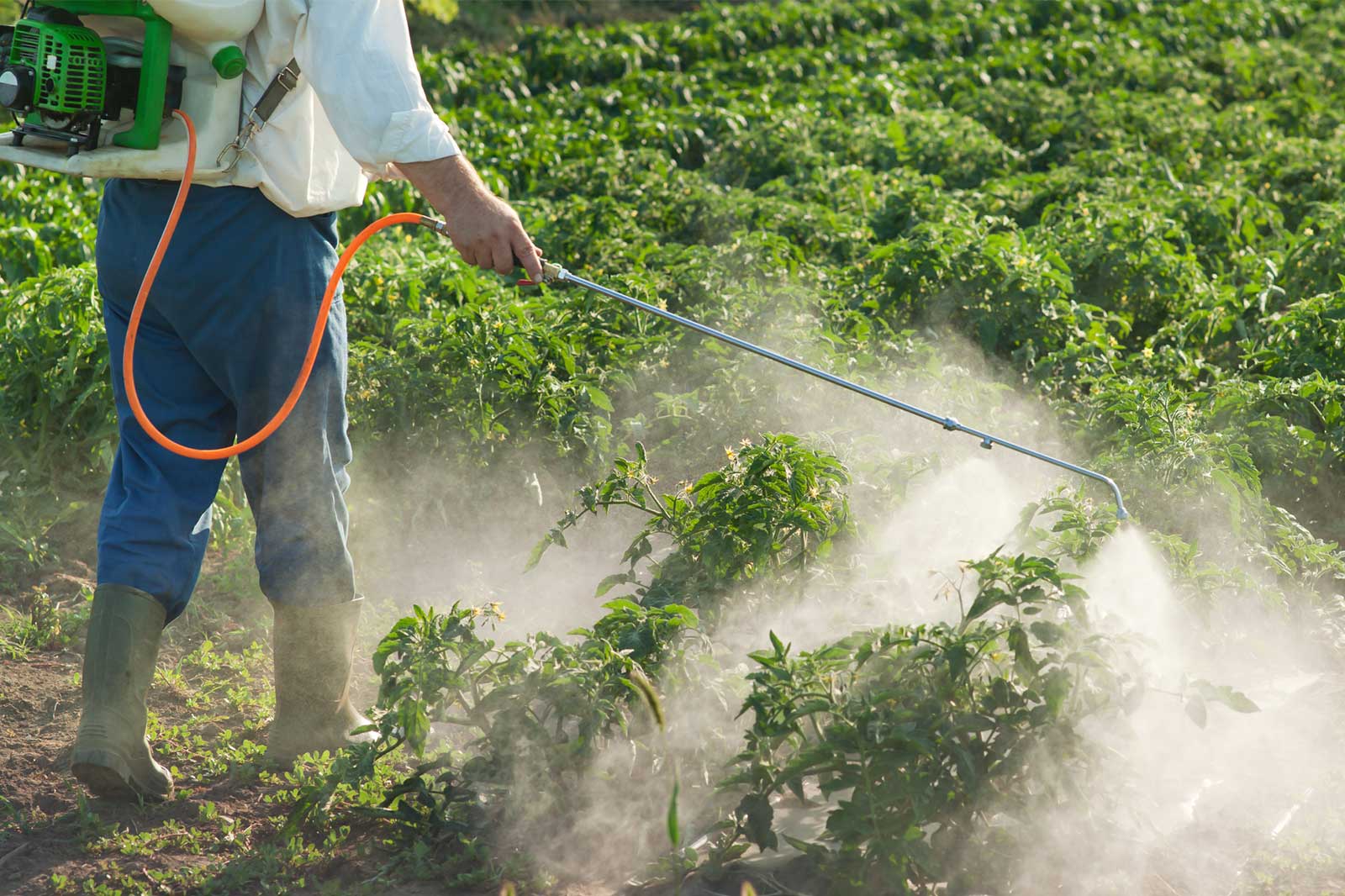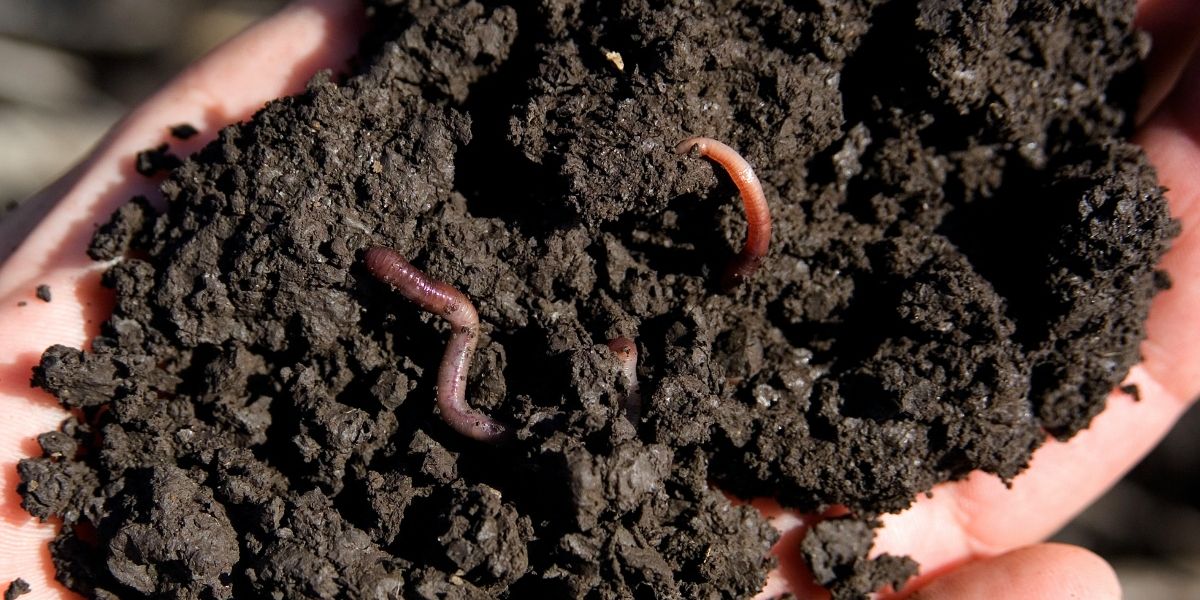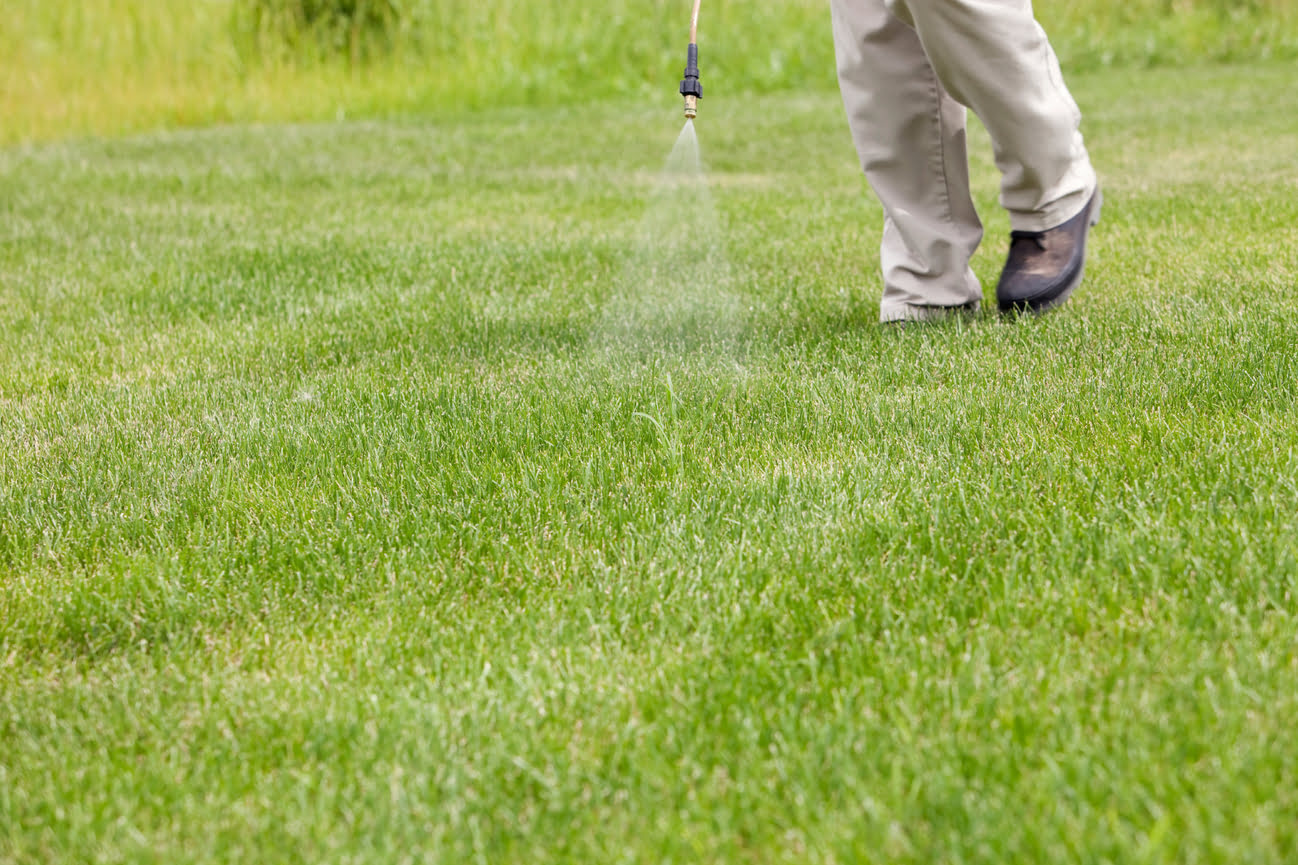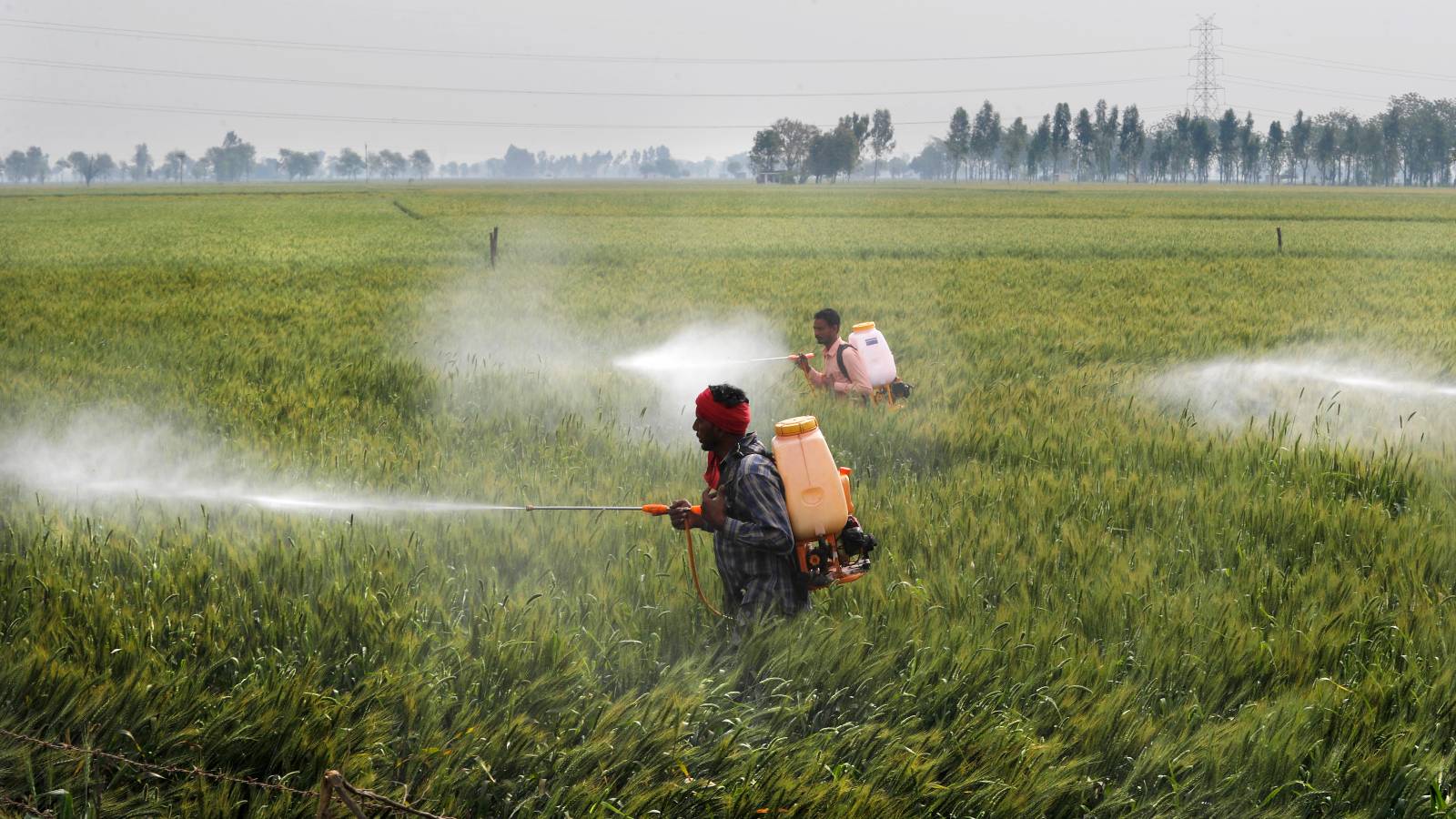Home>Gardening News and Trends>Latest News>How Do Pesticides And Fertilizers Cause Water Pollution?
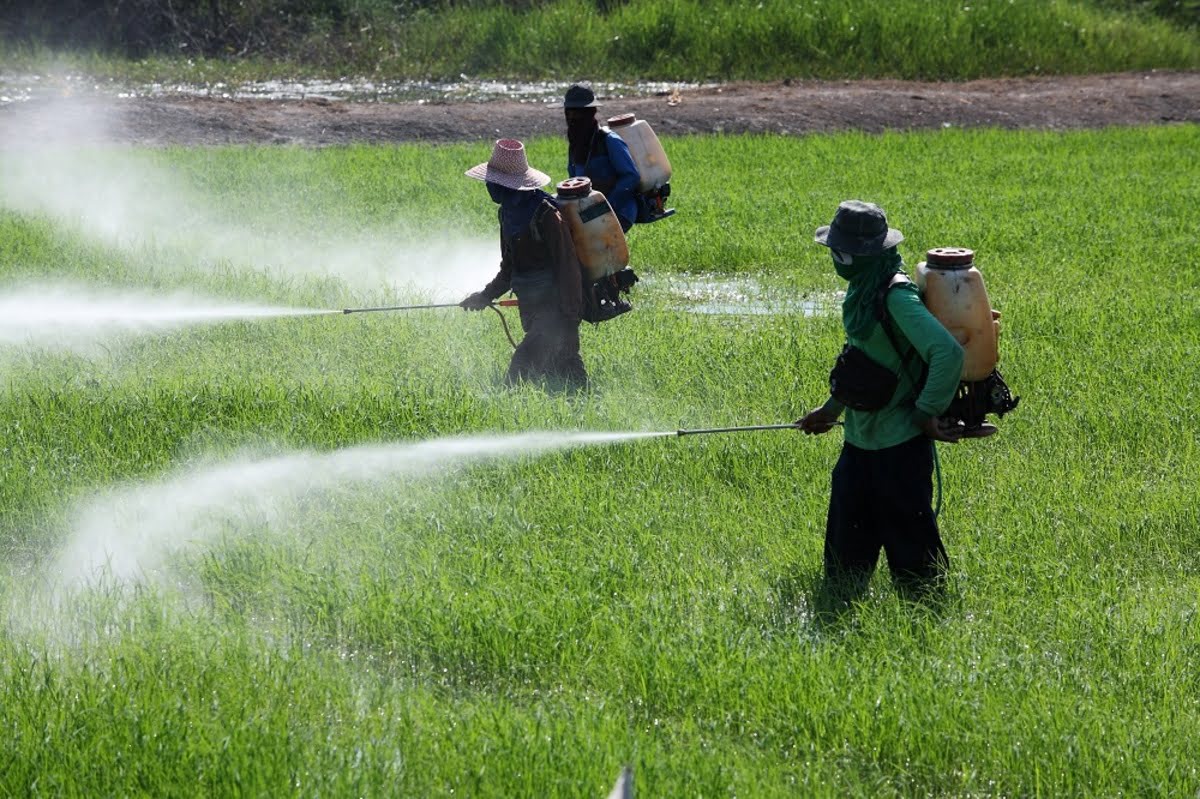

Latest News
How Do Pesticides And Fertilizers Cause Water Pollution?
Published: November 23, 2023
Learn about the latest news on how pesticides and fertilizers contribute to water pollution and its detrimental effects. Stay informed on the environmental impact and find ways to minimize harm.
(Many of the links in this article redirect to a specific reviewed product. Your purchase of these products through affiliate links helps to generate commission for Chicagolandgardening.com, at no extra cost. Learn more)
Table of Contents
Introduction
Water pollution is a pressing environmental concern that poses significant risks to both human and ecological health. Contamination of our water sources can come from various sources, including industrial waste, sewage, and agricultural practices. Among these, the use of pesticides and fertilizers in agriculture plays a major role in contributing to water pollution.
Agricultural activities are crucial for meeting the food demands of a growing population, but they also have significant environmental repercussions. Pesticides and fertilizers are commonly used to protect crops from pests and to enhance plant growth, respectively. However, when these chemicals are improperly used or reach water bodies through runoff and leaching, they can have detrimental effects on water quality and the organisms that depend on it.
In this article, we will explore how pesticides and fertilizers contribute to water pollution and examine the impact of these contaminants on both ecosystems and human health. We will also discuss the regulatory measures in place to mitigate water pollution and protect our water resources.
It is worth noting that while this article focuses on the effects of pesticides and fertilizers on water pollution, the issue of water contamination is multifaceted, involving numerous other factors such as industrial pollutants, pharmaceuticals, and plastics. Nonetheless, pesticides and fertilizers remain significant contributors to water pollution and deserve attention due to their widespread use in agriculture.
The Sources of Water Pollution
Water pollution can originate from various sources, both natural and anthropogenic. Understanding these sources is essential in addressing and mitigating the problem. Here are some of the major sources of water pollution:
- Industrial Activities: Industries such as manufacturing plants, mining operations, and power plants can release untreated or inadequately treated wastewater into nearby water bodies. This wastewater often contains heavy metals, toxic chemicals, and other pollutants that pose a threat to aquatic life and human health.
- Sewage and Wastewater Discharge: Sewage treatment plants and septic systems can also be significant sources of water pollution. If these systems are not properly maintained or if they overflow during heavy rainfall events, untreated sewage and wastewater can find their way into rivers, lakes, and oceans.
- Agricultural Practices: Agricultural activities, particularly the use of pesticides and fertilizers, can contribute to water pollution. When farmers apply pesticides to their crops, the excess chemicals can be carried away by rainwater or irrigation and end up in nearby water bodies. Similarly, the overuse or improper application of fertilizers can lead to nutrient runoff into water sources.
- Urban Runoff: Rainwater that flows over paved surfaces, such as roads and parking lots, can pick up pollutants like oil, sediment, and litter. This urban runoff, also known as stormwater runoff, can contaminate rivers, streams, and coastal areas if not properly managed.
- Oil and Chemical Spills: Accidental spills of oil and hazardous chemicals from ships, pipelines, or storage tanks can have severe consequences for water ecosystems. These spills can result in long-term damage to marine life and also impact the quality of drinking water.
These are just a few examples of the sources of water pollution, and each one requires specific management strategies to prevent or minimize its impact. By understanding the different sources, we can develop targeted approaches to reduce pollution and protect our water resources.
Pesticides and Their Impact on Water
Pesticides are chemical substances used to control or eliminate pests that can damage crops and reduce agricultural yields. While they play a crucial role in modern agriculture, pesticides can have significant negative effects on water quality when they enter water bodies. Here are some of the main impacts of pesticides on water:
- Surface Water Contamination: Pesticides applied to crops can be carried away by runoff during rainfall or irrigation events. These chemicals can then enter nearby streams, rivers, and lakes, leading to surface water contamination. This contamination can harm aquatic organisms, such as fish, amphibians, and invertebrates, disrupting their reproductive cycles and impairing their overall health.
- Groundwater Contamination: Pesticides can also infiltrate the soil, reaching the groundwater through a process known as leaching. Once in the groundwater, these chemicals can persist for extended periods, posing a long-term threat to drinking water sources. Consuming water contaminated with pesticides can have adverse health effects on humans, including increased risk of certain cancers and developmental disorders.
- Ecological Disruption: Pesticides not only directly harm aquatic organisms but also disrupt entire ecosystems. For example, the decline in populations of important pollinators, such as bees and butterflies, due to pesticide exposure can have far-reaching consequences for the pollination of plants and biodiversity. This disruption of ecological balance can have cascading effects throughout the food chain.
- Pesticide Resistance: Continuous and excessive use of pesticides can lead to the development of pesticide-resistant pests, requiring even stronger and more harmful chemicals to control them. This creates a cycle of increasing pesticide use, further exacerbating the pollution of water bodies and the associated negative impacts.
It is crucial to note that not all pesticides have the same impact on water quality. Some pesticides are more toxic and persistent than others, making them more likely to cause significant harm. Additionally, the method and timing of pesticide application can also influence the extent of water pollution. Implementing best management practices, such as integrated pest management strategies and judicious use of pesticides, can help minimize their impact on water resources.
Fertilizers and Their Impact on Water
Fertilizers are essential for promoting plant growth and increasing agricultural productivity. However, the excessive use and improper application of fertilizers can result in significant water pollution. Here are some of the key impacts of fertilizers on water:
- Nutrient Runoff: Fertilizers contain nutrients such as nitrogen and phosphorus, which are essential for plant growth. However, when these nutrients are applied in excess or during periods of heavy rainfall, they can be carried away by runoff into nearby water bodies. The excessive nutrient levels in the water can cause eutrophication, a process in which algae and other aquatic plants grow rapidly, depleting oxygen levels and harming aquatic organisms.
- Algal Blooms: Elevated nutrient levels from fertilizers can trigger the growth of harmful algal blooms, such as cyanobacteria. These blooms can produce toxins that pose risks to human health and aquatic ecosystems. When algal blooms die and decompose, they consume oxygen, leading to hypoxic or dead zones where aquatic life cannot survive.
- Drinking Water Contamination: Nitrate, a common component of fertilizers, is highly soluble and can easily leach into groundwater. Elevated nitrate levels in drinking water pose a significant health risk, particularly for infants, as excessive nitrate consumption can interfere with the oxygen-carrying capacity of the blood.
- Aquatic Habitat Destruction: Eutrophication resulting from fertilizer runoff can disrupt aquatic habitats and harm fish and other organisms. The excess nutrients can lead to habitat degradation, loss of biodiversity, and changes in species composition, impacting the overall health and functioning of aquatic ecosystems.
To reduce the environmental impact of fertilizers on water, several strategies can be employed. These include implementing precision agriculture techniques to target fertilizer application only where needed, adopting slow-release or controlled-release fertilizers that release nutrients gradually, and promoting sustainable farming practices that focus on soil health and nutrient management.
Furthermore, educational programs and incentives can encourage farmers to adopt practices that minimize fertilizer use, such as crop rotation, cover cropping, and conservation tillage. Investing in research and innovation to develop environmentally friendly fertilizers and farming methods can also play a vital role in reducing fertilizer-related water pollution.
Runoff and Leaching
Runoff and leaching are two significant pathways by which pesticides and fertilizers can enter water bodies, contributing to water pollution. Understanding these processes is crucial in developing effective strategies to mitigate their impact.
Runoff: Runoff occurs when water, whether from rainfall or irrigation, flows over the land surface, picking up pollutants along the way and transporting them into streams, rivers, and other water bodies. Pesticides and fertilizers applied to agricultural fields can be carried away by runoff if they are not absorbed by the plants or soil. Runoff can be particularly problematic during heavy rainfall events or when the soil is saturated, as it increases the likelihood of pesticide and fertilizer movement into water sources.
Leaching: Leaching refers to the downward movement of pesticides or fertilizers through the soil, eventually reaching the groundwater. This process can occur when excessive amounts of pesticides or fertilizers are applied, or when they are applied during periods of heavy rain or irrigation. Once in the groundwater, these contaminants can persist for long periods and potentially contaminate drinking water sources.
To mitigate the runoff and leaching of pesticides and fertilizers, several approaches can be employed:
- Conservation Practices: Implementing conservation practices such as contour plowing, terracing, and buffer strips can help reduce erosion and the potential for runoff. These practices slow down water flow, giving soil and vegetation more time to absorb and filter out pollutants.
- Cover Crops and Crop Rotation: Planting cover crops, which provide ground cover during fallow periods, can help reduce soil erosion and nutrient runoff. Additionally, practicing crop rotation can help break pest cycles, reducing the reliance on pesticides and minimizing their potential impact on water quality.
- Precision Agriculture: Employing precision agriculture technologies, such as variable rate application and site-specific nutrient management, allows farmers to apply pesticides and fertilizers only where and when needed. This targeted approach helps minimize over-application and reduces the risk of runoff and leaching.
- Education and Awareness: Providing farmers with education and training on best management practices can increase awareness about the impact of pesticides and fertilizers on water quality. By promoting responsible pesticide and fertilizer use, farmers can make informed decisions to minimize their environmental footprint.
By implementing these strategies and adopting a holistic approach to land and water management, we can effectively reduce the runoff and leaching of pesticides and fertilizers, protecting water quality and promoting sustainable agriculture.
Drinking Water Contamination
One of the significant concerns arising from the pollution caused by pesticides and fertilizers is the contamination of drinking water sources. When these chemicals find their way into water bodies through runoff and leaching, they can pose a threat to human health. Here are some key aspects of drinking water contamination:
- Nitrate Contamination: Excessive use of fertilizers, particularly those containing nitrogen, can lead to elevated levels of nitrate in water sources. When nitrate-contaminated water is consumed, it can interfere with the oxygen-carrying capacity of the blood, resulting in a condition called methemoglobinemia or “blue baby” syndrome. This is particularly harmful to infants and can have long-term health impacts.
- Pesticide Residues: Pesticides, even in low concentrations, can contaminate drinking water supplies. The persistence of certain pesticides can lead to long-term exposure, increasing the risk of chronic health effects such as cancer, reproductive disorders, and neurological conditions.
- Chlorination Byproducts: To disinfect water, chlorine is commonly used in water treatment plants. However, when chlorine reacts with organic matter, such as pesticide residues, it can form disinfection byproducts (DBPs) such as trihalomethanes (THMs). These DBPs have been linked to an increased risk of cancer and other adverse health effects.
- Emerging Contaminants: Emerging contaminants, such as pharmaceuticals, personal care products, and hormones, can also find their way into water sources. While not directly related to pesticides and fertilizers, these contaminants can further contribute to the contamination of drinking water supplies, posing potential health risks.
To ensure the safety of drinking water, rigorous monitoring and treatment measures are necessary. Water treatment facilities employ various processes, including filtration, disinfection, and advanced technologies, to remove contaminants from the water. However, complete removal of pesticide residues can be challenging, and it is essential to reduce the presence of these chemicals at the source.
Regulatory agencies play a crucial role in establishing standards for acceptable levels of pesticides and fertilizers in drinking water. Regular testing and monitoring programs help identify potential contamination issues, allowing for corrective actions to be taken promptly.
Additionally, promoting sustainable agricultural practices that reduce the need for pesticides and fertilizers can significantly contribute to minimizing the risk of drinking water contamination. Integrated pest management strategies, soil and nutrient management practices, and precision agriculture techniques can help farmers optimize their practices while reducing their impact on water quality.
Ensuring safe drinking water requires a collective effort from government bodies, farmers, water treatment facilities, and individuals. By addressing the issue of contamination from pesticides and fertilizers, we can safeguard our most precious resource and protect public health.
Ecological Impacts
The use of pesticides and fertilizers in agriculture has significant ecological ramifications, affecting not only water quality but also the delicate balance of ecosystems. Here are some of the key ecological impacts caused by these pollutants:
- Reduction in Biodiversity: Pesticides can have detrimental effects on non-target organisms, leading to a decline in biodiversity. For example, insecticides can harm beneficial insects, such as pollinators and natural predators of pests, disrupting the intricate relationships within ecosystems.
- Disruption of Food Chains: Pesticides can disrupt food chains by directly affecting primary producers or by indirectly affecting organisms at higher trophic levels. When pesticide use leads to a decline in plant or insect populations, it can disrupt the entire food web, ultimately impacting predators and other dependent species.
- Harm to Aquatic Life: Pesticide runoff into water bodies poses a significant threat to aquatic life. Aquatic organisms, such as fish, amphibians, and invertebrates, are particularly vulnerable to the toxic effects of pesticides. These chemicals can accumulate in their tissues, leading to physiological disruptions, reproductive problems, and even death.
- Altered Habitat Structure: Eutrophication resulting from excessive fertilizer runoff can cause shifts in the composition and structure of aquatic habitats. The proliferation of algae and aquatic plants can impede sunlight penetration, reduce oxygen levels, and alter the physical characteristics of water bodies. These changes can negatively impact the survival and distribution of many aquatic species.
- Impact on Soil Health: Excessive use of fertilizers can lead to imbalances in soil nutrients, reducing soil health and disrupting soil microbial communities. This can lead to poor soil structure, decreased water and nutrient-holding capacity, and increased susceptibility to erosion. Consequently, the capacity of ecosystems to support diverse plant and animal life may be diminished.
The ecological impacts of pesticides and fertilizers extend beyond individual organisms, affecting entire ecosystems and the invaluable services they provide. For instance, the decline in pollinator populations due to pesticide exposure can hinder the pollination of plants, diminishing agricultural productivity and threatening food security.
To mitigate these ecological impacts, it is essential to adopt sustainable agricultural practices that minimize the use of pesticides and fertilizers. Integrated pest management, conservation agriculture techniques, and organic farming methods can help reduce reliance on chemical inputs, promote biodiversity, and restore ecological balance.
In addition to reducing the use of harmful chemicals, preserving natural habitats and creating buffer zones around water bodies can help protect ecosystems and provide refuge for wildlife. Restoring and conserving wetlands can also aid in the filtration and removal of pollutants, as well as provide essential habitats for a diverse range of species.
By recognizing and addressing the ecological impacts of pesticides and fertilizers, we can work towards achieving a harmonious coexistence between agriculture and the natural environment, fostering healthy ecosystems that support both biodiversity and sustainable food production.
Regulation and Mitigation Measures
Given the significant environmental and health risks associated with the use of pesticides and fertilizers, regulatory measures and mitigation strategies are essential to minimize their impact on water quality. Here are some key approaches taken to address this issue:
- Regulatory Frameworks: Governments and regulatory agencies play a pivotal role in setting standards and enforcing regulations related to pesticide and fertilizer use. These regulations typically include guidelines on allowable pesticide residues in food and drinking water, as well as restrictions on the types of pesticides that can be used and their application methods. Additionally, regulations may establish buffer zones around water bodies to minimize the risk of pollution from agricultural activities.
- Education and Training: Providing education and training programs to farmers, agricultural workers, and pesticide applicators is crucial for promoting responsible and safe pesticide and fertilizer use. Training programs can focus on proper handling, storage, and application techniques to minimize their environmental impact. Additionally, emphasizing the importance of integrated pest management practices and sustainable agriculture can encourage the adoption of alternative methods that reduce reliance on chemical inputs.
- Monitoring and Testing: Regular monitoring and testing of water sources, both surface water and groundwater, are essential to identify potential contamination issues. Water treatment facilities, regulatory agencies, and research institutions collaborate to conduct comprehensive testing and analysis to ensure that drinking water meets quality standards. Monitoring programs may also include testing for emerging contaminants to stay ahead of new challenges.
- Best Management Practices (BMPs): Best Management Practices provide guidelines for farmers to minimize the environmental impact of pesticide and fertilizer use. These practices may include using precision agriculture techniques to target inputs, implementing integrated pest management strategies, adopting soil and nutrient management practices, and implementing conservation measures to reduce erosion and runoff. BMPs are often developed collaboratively with farmers, academics, and industry experts to provide practical and effective solutions.
- Research and Innovation: Ongoing research and innovation are crucial for developing safer and more sustainable alternatives to conventional pesticides and fertilizers. This includes investing in the development of biological control methods, such as biopesticides and beneficial insects, as well as exploring organic farming practices and precision agriculture technologies. Additionally, advancements in soil health management and nutrient optimization can help reduce the environmental impact of fertilizers.
Collaborative efforts between governments, regulatory bodies, farmers, research institutions, and relevant stakeholders are vital to effectively regulate and mitigate the impacts of pesticides and fertilizers on water quality. By combining regulatory measures, education, monitoring, and sustainable farming practices, we can protect our water resources, safeguard human health, and foster an environmentally responsible agricultural sector.
Conclusion
The use of pesticides and fertilizers in agriculture plays a crucial role in meeting the food demands of a growing global population. However, their improper use and resulting water pollution pose significant risks to human health and the environment. The impact of these chemicals on water quality extends beyond surface water contamination, reaching groundwater and ultimately affecting drinking water sources.
Through runoff and leaching, pesticides and fertilizers enter water bodies, leading to ecological disruptions, habitat degradation, and biodiversity loss. Aquatic ecosystems suffer as fish, amphibians, and invertebrates are harmed, and the delicate balance of food chains is disrupted. Furthermore, excessive nutrient runoff from fertilizers can cause algal blooms and subsequent oxygen depletion, creating dead zones that suffocate aquatic life.
To address these concerns, regulatory frameworks, monitoring programs, and best management practices have been implemented to minimize the impact of pesticides and fertilizers on water quality. Education and training programs promote responsible use, while research and innovation drive the development of safer alternatives and sustainable farming practices.
It is important for farmers, regulatory agencies, and communities to recognize the need for integrated pest management strategies, precision agriculture techniques, and nutrient optimization. By adopting these practices, minimizing chemical inputs, and implementing conservation methods, the environmental footprint of agriculture can be significantly reduced.
Protecting water resources and mitigating the contamination of drinking water requires a collaborative approach. Governments, industry stakeholders, researchers, and farmers must work together to implement effective regulations, provide education and support, and foster innovation in order to achieve sustainable solutions.
By prioritizing the protection of water quality, we can safeguard the health of ecosystems, preserve biodiversity, and ensure access to clean and safe drinking water for future generations.
